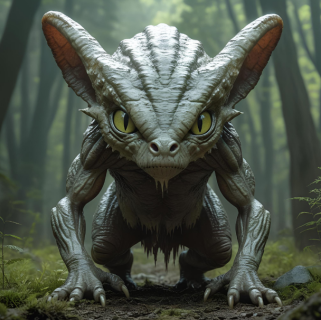
Cryptozoology, often regarded as the study of hidden or legendary creatures, captures the imagination of many who are fascinated by the mysteries lurking beyond the realm of conventional science. This field investigates creatures whose existence remains unproven, from legendary beasts like Bigfoot and the Loch Ness Monster to lesser-known entities reported in folklore around the world. While mainstream scientists often dismiss cryptozoology as pseudoscience, the allure of uncovering beings that defy explanation continues to drive explorers, researchers, and enthusiasts alike to seek out these elusive creatures.
Exploring the Fascinating World of Cryptozoology and Its Hidden Creatures
Cryptozoology is a unique blend of folklore, adventure, and scientific inquiry, centered on the quest to find creatures that have yet to be officially documented. Enthusiasts often use a combination of eyewitness accounts, historical records, and modern technology such as drones and underwater sonar to search for clues that may confirm the existence of these beings. The field is as much about exploring human culture and storytelling as it is about biological discovery, revealing how societies throughout history have envisioned creatures that symbolize fears, hopes, and mysteries. Despite skepticism, cryptozoologists believe that some of these creatures might be real, hiding in remote or inaccessible regions of the world.
Many of the creatures studied in cryptozoology come from ancient legends and local myths, which often share striking similarities across different cultures — suggesting a common origin or universal pattern of storytelling. For example, the Yeti in the Himalayas, described as a giant, ape-like creature, shares parallels with North American Bigfoot and the Australian Yowie. Researchers have documented footprints, sounds, and other physical evidence, but tangible proof remains elusive. The thrill of potentially discovering a new species or confirming the existence of a legendary creature keeps the field alive and fiercely debated, blurring the line between fact and fiction.
Despite the lack of conclusive scientific evidence, cryptozoology continues to inspire modern expeditions and documentaries, fueling popular culture and curiosity. Some scientists argue that exploring these phenomena can lead to new biological discoveries, especially in unexplored habitats rich in biodiversity. Others remain skeptical, emphasizing the importance of rigorous scientific validation before accepting such creatures as real. Regardless, the mystery surrounding these hidden creatures sustains a captivating narrative that invites us to look beyond the known and embrace the possibility of the extraordinary.
Unraveling Mysteries: The Search for Elusive Creatures Around the Globe
Across the globe, reports of mysterious creatures have persisted for centuries, from the icy lakes of Siberia to the dense Amazon rainforest. In North America, sightings of Bigfoot or Sasquatch have been documented in folklore, eyewitness accounts, and even some alleged photographs, sparking numerous expeditions and debates. Meanwhile, Europe’s Loch Ness Monster continues to intrigue locals and tourists alike, with sonar scans and visual reports fueling ongoing investigations. These stories often share common themes — large, mysterious beings that seem to evade human contact, thriving in secluded environments that are difficult to explore thoroughly.
In Asia, the Yeti or “Abominable Snowman” is one of the most iconic cryptids, believed to inhabit the snow-covered mountains. Sightings and footprints have been reported for centuries, with some explorers claiming to have encountered or found physical evidence of this elusive creature. Similarly, the Australian Yowie and the Indonesian Orang Pendek are lesser-known but equally captivating legends that prompt scientific curiosity and adventurous expeditions. The challenge in each case lies in verifying these sightings and gathering tangible evidence, which is complicated by harsh terrains, thick forests, and the creatures’ apparent ability to remain hidden.
The search for these creatures often involves local communities who have preserved stories passed down through generations, providing valuable cultural context and clues. Modern technology has augmented traditional tracking methods, with camera traps, environmental DNA analysis, and remote sensing playing crucial roles. Despite many false alarms and hoaxes, the persistent reports and anecdotal evidence keep the quest alive. Ultimately, unraveling these mysteries requires patience, open-mindedness, and a willingness to explore the unknown — reminding us that the world still holds secrets waiting to be uncovered.
Cryptozoology remains a captivating frontier at the intersection of myth and reality. While definitive proof of many legendary creatures remains elusive, the ongoing search reflects our innate curiosity and desire to understand the mysteries of our world. Whether these beings truly exist or are products of human imagination, they continue to inspire adventures, scientific inquiry, and a sense of wonder. In exploring the hidden corners of our planet, we not only chase legends but also celebrate the enduring spirit of discovery that drives us to look beyond what is known, into the realm of the extraordinary.
